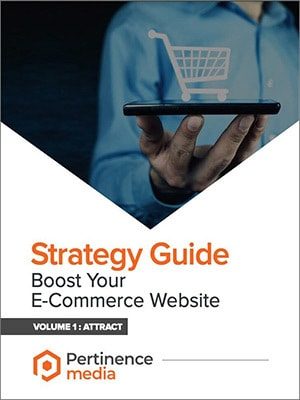Since the beginning of the pandemic, the popularity and need for digital services has caused most businesses to rethink their advertising priorities. In addition, the growth of the online retail market has made the medium essential to ensuring a greater level of success for businesses. In the case of Amazon, the rise in popularity of the platform has turned it into a place where it is not only easy to store, but to promote products and generate impressive returns on investment comparable to Google and Meta Shopping. We will review the main keys to be successful on Amazon Ads as well as the various advertising actions that are possible on the platform.
Amazon Seller Central
Being an Amazon Seller is mandatory to ensure control over your products, inventory, and marketplaces. It also gives you access to the Prime badge. According to one statistic, Amazon Prime members spend nearly double what non-member customers spend per year (Arishekar, 2022). Having access to this customer base through the FBA with the Prime badge can be extremely beneficial. From there, the Seller can sell directly to consumers on Amazon, without the platform having to purchase the products to resell them themselves and can also create their own listing. Similar to Google, the products must contain a suitable title of no more than 200 characters, 5 bullet points of information about the product, images, and more. The Seller is in control of its products, its prices, its inventory, and also the comments (reviews).
An important thing to note is that the Amazon platform uses organic search engine optimization in the same way as any search engine (e.g. Google, Bing…). Several factors influence the search results and performance of each product. Here are some of them:
a. Titles and descriptions must include keywords specific to each product;
b. Bullet point descriptions should be complete and informative;
c. A minimum of 15 reviews with a 3.5/5 average;
d. Low, yet realistic prices;
e. Have their products Fulfilled by Amazon (i.e. that are distributed by Amazon)
Brand Registry
Once the Seller Central process is completed, the seller has access to the Brand Registry. The Brand Registry allows to show that the seller is the owner of his products and/or his brand. This step is essential as it ensures that the seller is not actually an unauthorized reseller, thus ensuring that sales and profits go to the brand owner. To register, the seller must provide:
a. The brand name with its registered and active trademark;
b. The trademark number;
c. A list of categories where the trademark will be listed on the platform.
Once the brand is registered, the seller will have access to several optimization parameters on the platform such as the modification of the descriptive content of the products (titles, descriptions…), multi-language listing, A+ content, a Storefront, and much more.
Amazon Ads/PPC
After registering your brand and setting up your Amazon Seller, it’s time to advertise! Amazon Ads allows you to push your sales through platform-specific advertising campaigns under three branches: Sponsored Products, Sponsored Brands, and Sponsored Display.
The 3 different advertising options on Amazon
Sponsored Products
Amazon’s equivalent to Google Search campaigns. The seller builds a list of keywords, and chooses a targeting mode (either manual or automatic), and a bidding strategy (dynamic or fixed). For the targeting, the automatic mode allows Amazon to understand the product and generate a list of negative keywords. For the bidding strategy, the dynamic mode lets Amazon play with the bid depending on which ads are more likely to generate conversions. The fixed mode leaves the bid stable throughout the campaign.
Sponsored Display
Amazon’s equivalent to Google Display campaigns. They can be displayed as a banner on search or shopping pages, on Amazon’s main page, as well as on some third-party sites. The bidding strategy is important in order to ensure an optimal turnover of the ads. On Amazon, the seller must choose between a CPC (cost-per-click), which will optimize the number of clicks generated by the ad, or a vCPM (cost-per-thousand impressions), which will optimize the number of impressions of the ad. For a product that is just entering the market, a vCPM strategy is often suggested since it will generate more awareness and recognition of the product. Conversely, a mature product will be better served with a CPC strategy, where the objective is strictly to maximize sales.
Sponsored Brands
This ad format acts as an intermediary between Sponsored Products and Sponsored Display. The strategy of such a campaign is to increase the awareness of an entire brand, not just one specific product. It is the best way to promote your products and your brand at the same time, but at a higher cost than other campaigns since you can have both static visual ads, videos, product collections, and much more. However, it is recommended to integrate Sponsored Brands campaigns with Sponsored Products campaigns in order to use the latter’s keywords. So, a brand that is looking to not only increase its awareness, but to propel its sales at the same time would be able to achieve better results with a Sponsored Brand campaign alongside the Sponsored Products.
To finish,
There it is! This short introduction to Amazon should help you demystify the medium and get you excited about implementing your own marketing strategy.
The important thing for any e-commerce company that wants to launch on Amazon is to have a marketing strategy specific to the platform. If you want to develop your presence on Amazon or simply introduce your products and your brand there, our Amazon experts at Pertinence Media will help you along the way. Whether you want to increase your sales, develop your marketing, or launch your presence on the Amazon platform, visit our Amazon page and see how our expertise can benefit you.






